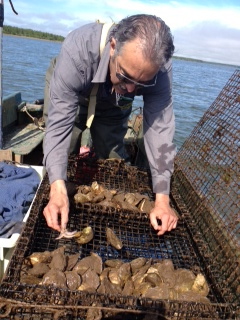
Last May, I was fortunate to drive New Brunswick’s Acadian Coast for an upcoming Boston Globe story. Stretching 110 miles from Shediac to Caraquet, the northeastern coast of New Brunswick boasts the warmest waters north of Virginia, the sand dunes of Kouchibouguac National Park, lonely lighthouses on Miscou Island, and the largest lobster processing facility on the continent. Yet, the real reason folks go out of their way to venture to the Acadian Coast is to experience the French Canadian culture. Stop at any of the small towns and you’ll notice a distinctive joie de vivre, with foot-stomping fiddle music, down-home French cooking accentuating the local seafood catch, and festivals that celebrate the Acadians’ 400-year-old history in the Atlantic Maritimes.
Yet, it was one day in Caraquet where I experienced my greatest culinary pleasure of the year. In the morning, oysterman Gaetan Dugas took me out on the waters of Caraquet Bay to show me firsthand why these oysters are a cherished commodity in high demand from chefs around North America. Especially the petites, small oysters that are both succulent and briny. Dugas’ ancestors include a pirate who commandeered a ship against the British in the 1750s, but it’s his father who taught him how to oyster farm and his grandfather who taught him the traditional ways of the local Mi’kmaq people.
Just as bountiful as the sea are the forests surrounding Caraquet, ripe with morels, chanterelles, oyster mushrooms, and other goodies like the foot of the cattail. Local Jean Patenaude made a name for himself scouring the countryside for edibles, bringing home laundry baskets full of wild mushrooms on ideal days in summer. In the afternoon, he took me foraging for morels.
That evening, I assembled the goodies I had collected that day and brought them to chef Karen Mersereau, the mother of gastronomy in Caraquet. Mersereau was a food marketing rep in Toronto when she met Gerard Paulin, the third-generation hotelier of
Hotel Paulin, a Victorian-era gem perched on a hill above the water of Caraquet Bay. A dozen years later, the couple are parents of a boy, Jules, and Karen is firmly entrenched at the helm of the hotel’s kitchen. She has wisely aligned herself with both Dugas and Patenaude.
Mersereau took my day’s bounty and created a memorable wild mushroom oyster bisque. To ensure that every spoonful was chockful of meat, she throws in the native palourdes clam, similar to a quahaug. Her bevy of local supplies would make most chefs weep with joy. In addition to oysters and mushrooms, there’s snow crabs, tuna, Atlantic salmon, shrimp, and halibut right off the boat, goat cheese and spring-fed lamb found in nearby farms, and blueberries and cloudberries that grow wild along the coast, perfect for making a sublime pie. At Hotel Paulin, the locavore movement has reached its crescendo.
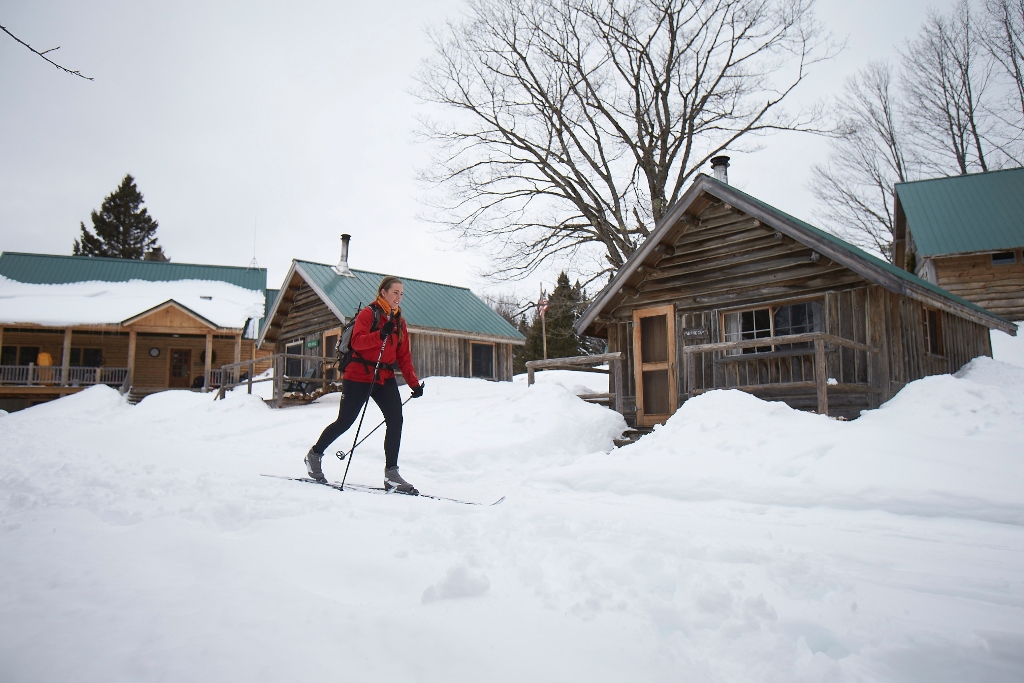 It might be getting a bit nippy this time of year in Maine, but that shouldn’t stop you from being immersed in the spectacular mountain beauty of the 100-Mile Wilderness Trail. The Appalachian Mountain Club is fortunate to house three of their backcountry lodges in this section of the state, all classic sporting camps that have been revamped and are rearing up for a busy winter season of cross-country skiing and snowshoeing. Choose to do a self-guided ski trip between the lodges or sign up for one of their guided excursions, like the lodge-to-lodge cross-country ski jaunt from Little Lyford to Gorman Chairback the weekend of January 22-24. There’s also a guided snowshoe lodge-to-lodge the following weekend and a winter sampler over MLK Weekend.
It might be getting a bit nippy this time of year in Maine, but that shouldn’t stop you from being immersed in the spectacular mountain beauty of the 100-Mile Wilderness Trail. The Appalachian Mountain Club is fortunate to house three of their backcountry lodges in this section of the state, all classic sporting camps that have been revamped and are rearing up for a busy winter season of cross-country skiing and snowshoeing. Choose to do a self-guided ski trip between the lodges or sign up for one of their guided excursions, like the lodge-to-lodge cross-country ski jaunt from Little Lyford to Gorman Chairback the weekend of January 22-24. There’s also a guided snowshoe lodge-to-lodge the following weekend and a winter sampler over MLK Weekend. 
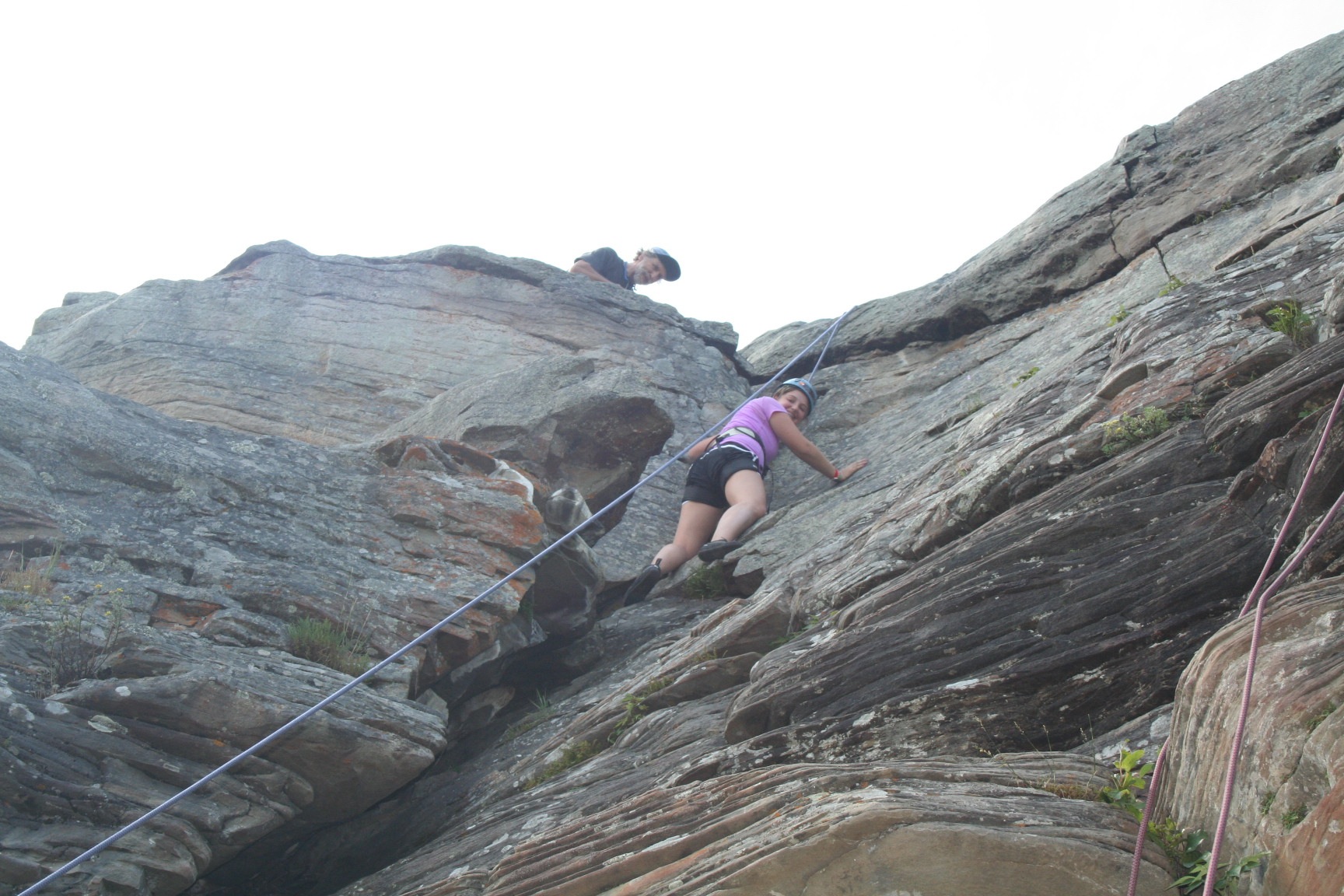 Each January, I like to look back at the prior year of travel and pick my five favorite travel days that come to mind. Not to boast about where I’ve been on assignment, but to point you in the right direction. You’ll be happy to find yourselves in any of these five locales.
Each January, I like to look back at the prior year of travel and pick my five favorite travel days that come to mind. Not to boast about where I’ve been on assignment, but to point you in the right direction. You’ll be happy to find yourselves in any of these five locales. 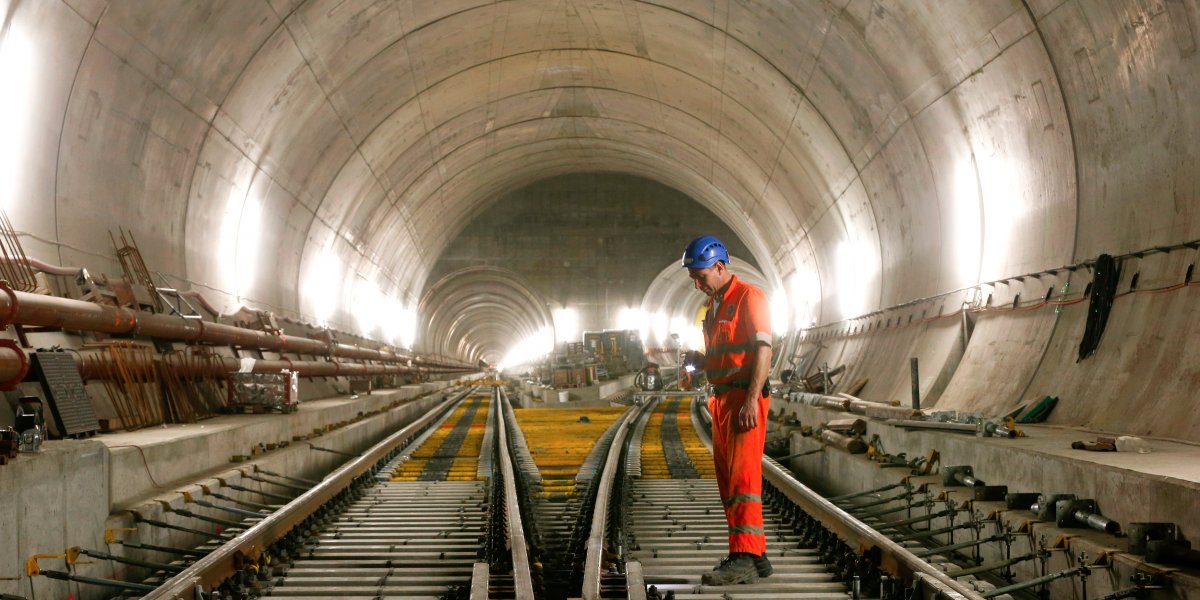 Already recognized as one of the premier train systems in the world, the Swiss Rail System can easily make its claim as the finest once the
Already recognized as one of the premier train systems in the world, the Swiss Rail System can easily make its claim as the finest once the 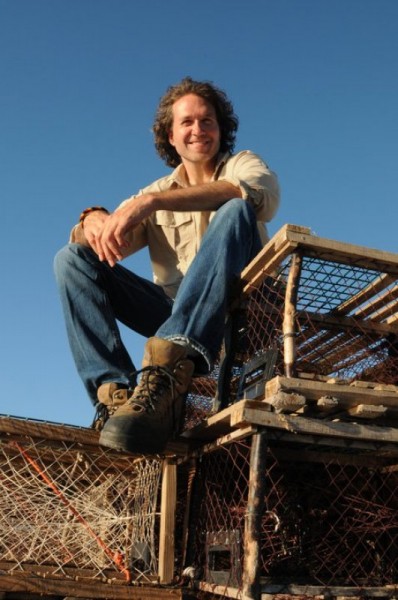 When I first ventured to the Inn at Bay Fortune on Prince Edward Island’s western shores, I arrived via kayak, courtesy of a four-day inn-to-inn sea kayaking jaunt. I paddled onto the grassy shores and walked across the sloping manicured lawn, getting my first glimpse of this grey-shingled estate and its Repunzel-like towers. After washing the salt and rust colored sand from my body, I arrived for dinner expecting the usual PEI meal of lobster and mussels. Little did I realize that I was in for a culinary epiphany.
When I first ventured to the Inn at Bay Fortune on Prince Edward Island’s western shores, I arrived via kayak, courtesy of a four-day inn-to-inn sea kayaking jaunt. I paddled onto the grassy shores and walked across the sloping manicured lawn, getting my first glimpse of this grey-shingled estate and its Repunzel-like towers. After washing the salt and rust colored sand from my body, I arrived for dinner expecting the usual PEI meal of lobster and mussels. Little did I realize that I was in for a culinary epiphany. Peering at the sailboats slicing through the harbor from the sixth-floor roof-deck bar of the new
Peering at the sailboats slicing through the harbor from the sixth-floor roof-deck bar of the new  Last May, I was fortunate to drive New Brunswick’s Acadian Coast for an upcoming Boston Globe story. Stretching 110 miles from Shediac to Caraquet, the northeastern coast of New Brunswick boasts the warmest waters north of Virginia, the sand dunes of Kouchibouguac National Park, lonely lighthouses on Miscou Island, and the largest lobster processing facility on the continent. Yet, the real reason folks go out of their way to venture to the Acadian Coast is to experience the French Canadian culture. Stop at any of the small towns and you’ll notice a distinctive joie de vivre, with foot-stomping fiddle music, down-home French cooking accentuating the local seafood catch, and festivals that celebrate the Acadians’ 400-year-old history in the Atlantic Maritimes.
Last May, I was fortunate to drive New Brunswick’s Acadian Coast for an upcoming Boston Globe story. Stretching 110 miles from Shediac to Caraquet, the northeastern coast of New Brunswick boasts the warmest waters north of Virginia, the sand dunes of Kouchibouguac National Park, lonely lighthouses on Miscou Island, and the largest lobster processing facility on the continent. Yet, the real reason folks go out of their way to venture to the Acadian Coast is to experience the French Canadian culture. Stop at any of the small towns and you’ll notice a distinctive joie de vivre, with foot-stomping fiddle music, down-home French cooking accentuating the local seafood catch, and festivals that celebrate the Acadians’ 400-year-old history in the Atlantic Maritimes.